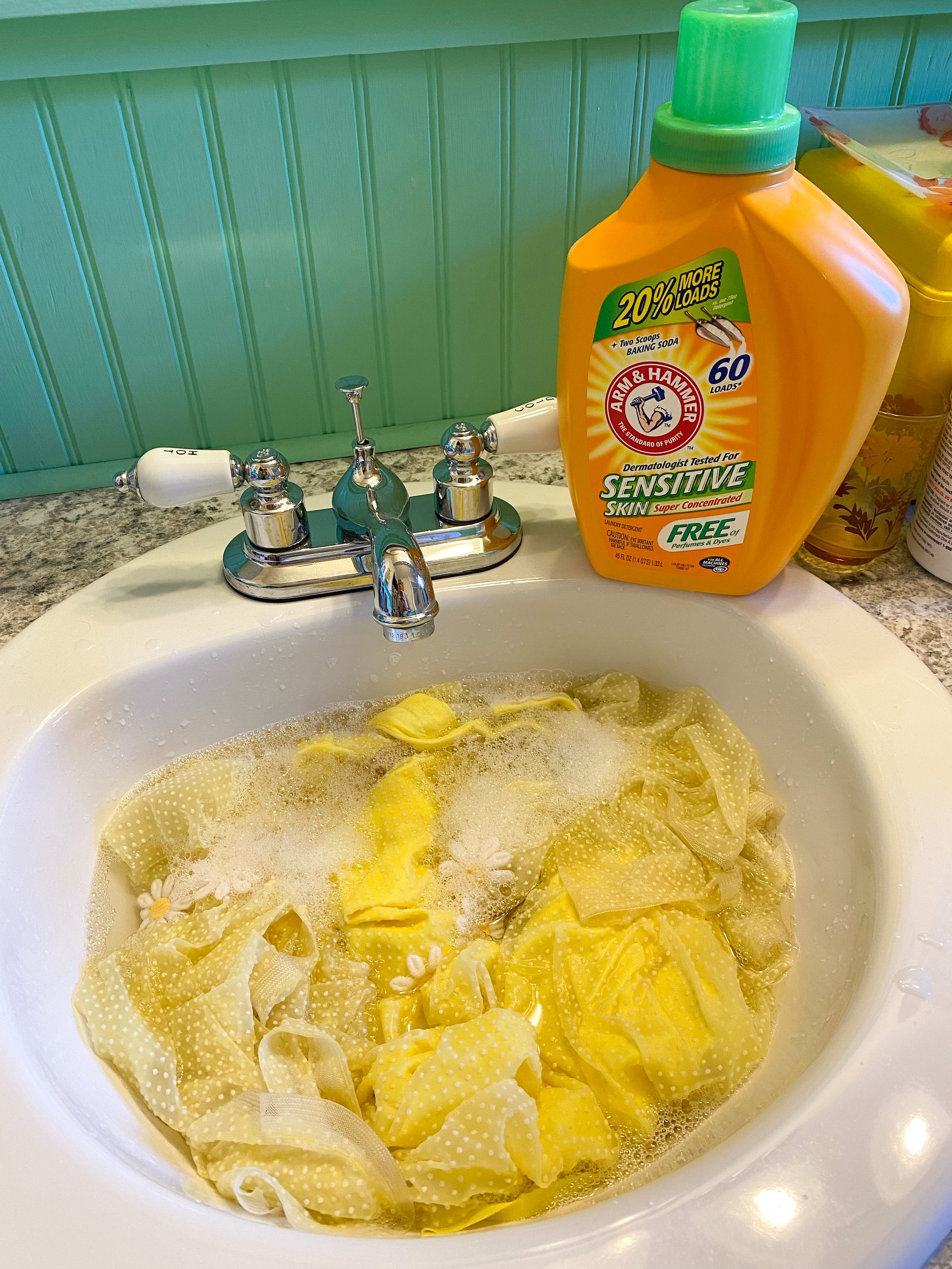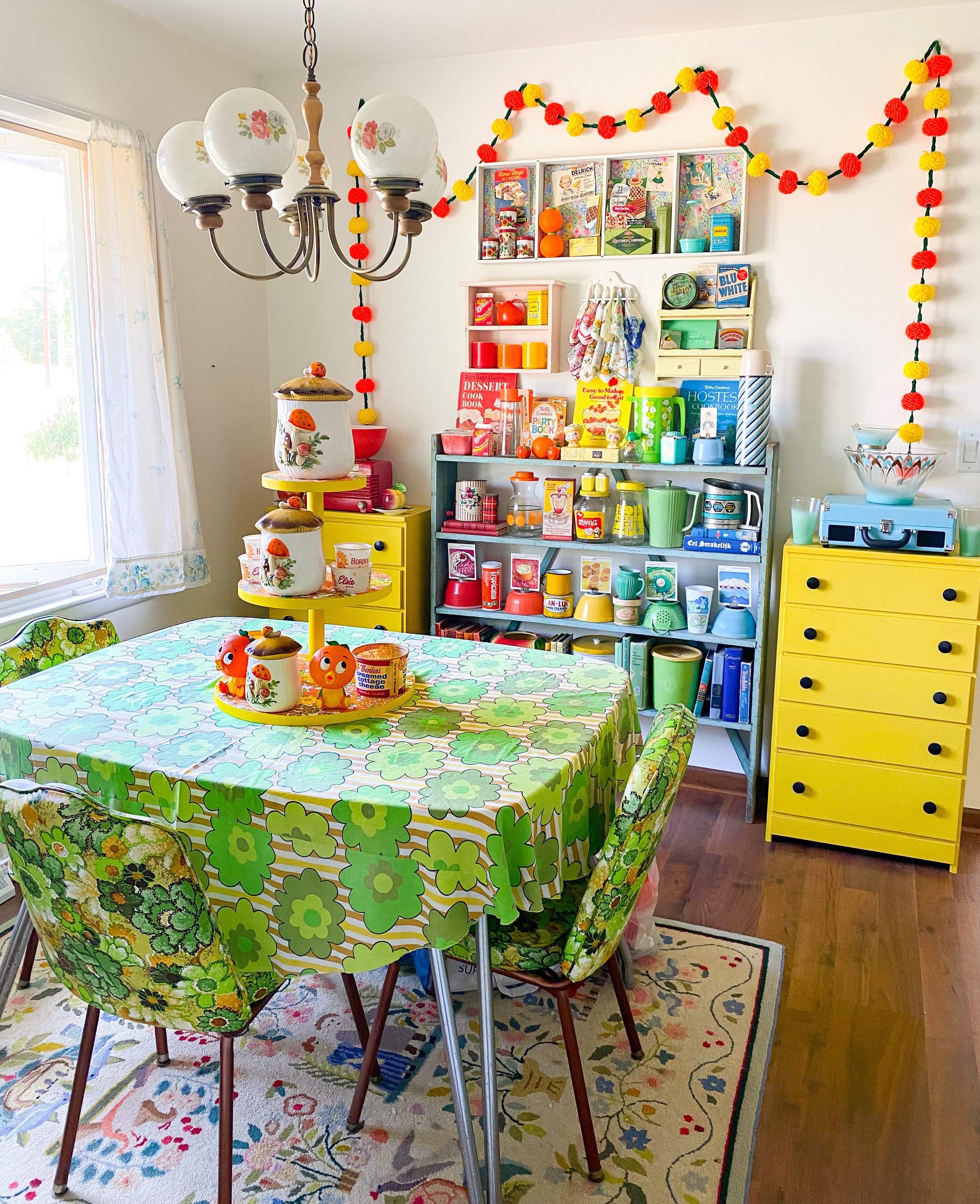How To Wash Vintage Clothes: Essential Tips & Tricks
This post may contain affiliate links where I earn a small commission at no additional cost to you. If you purchase anything through the linked website you will be supporting my small blog. Thanks!
Vintage clothing can be fragile and needs to be cleaned with care. I don’t just throw them into the washing machine, unless the tag specifically says I can. A lot of vintage pieces of clothing have no tags so it’s hard to know their washing instructions. Here are my best tips for washing vintage clothes.
Check the tags first
Always start by reading the tags that are on the clothing. Some of the items won’t have tags because they’ve been cut off or the item is hand sewn. I have a few dresses that say dry clean only and then I know to not get them wet (Though in the past I’ve made the mistake of not checking the tags and washed a dry clean only item. Absolutely nothing happened to it and now I regularly wash the skirt and it’s totally fine).
Put like colors together
I have a vintage clothing pile which can include aprons, night gowns, rugs, curtains… anything fabric that can’t go in a washing machine. When I’m ready to do some hand washing I make a pile of lights and darks. For this blog post I’m washing darks.
How to soak vintage clothes
You’re going to need something to soak the clothing in. If you’re washing one item, the bathroom sink will perfect. If you’re washing a lot of items you’ll want to use a big bucket or a plastic storage tub.
WARNING: If you’re suspicious that a DARK clothing item has never been washed before (Maybe it had its original tags or looks brand new) DO NOT soak it with other clothing items. The colors might bleed and affect the other clothing. Soak it separately in the sink just to be safe.
Use Gentle Hand-Washing Techniques
When cleaning vintage pieces, the most important factor is to avoid any kind of agitation or friction. This can lead to fading or tearing of the fragile material details on your clothes. To clean your garments safely, use a gentle hand-washing technique with water and a mild detergent. Gently massage the fabric between your fingertips without overlapping strokes and then rinse until all soap residue is removed.
Steps for hand washing vintage clothing items
Sort clothing by lights and darks and wash separately
Fill up sink or plastic tub with water
Pour in small amount of laundry detergent
Swirl the water around so the laundry detergent dissolves
Put clothing into water and gentle move them in the water - Do not twist or squeeze because the clothing is delicate
Let them soak as long as you like - I normally wait ten minutes
Take the clothing out and drain the water - The water might be brown and gross
Rinse the clothing gentle under the tap to wash off the dirty water and suds - Do not ring out clothes because this could distort their shape
If the water you dumped out was clear then you’re ready to dry the clothing
If the water was not clear then fill up the tub and repeat the washing steps until the water does run clear
How to get a bad smell out of vintage clothing
I bought a 1960s yellow daisy dress that smelled like a musty basement. I did the exact same steps above except I used vinegar instead. I poured equal parts water and vinegar into my bathroom sink to soak the dress. I then drained the sink, rinsed the dress and repeated the steps a few times. That helped get the smell out.
I buy most of my vintage clothing at flea markets and estate sales. Check out my blog posts for flea market tips and estate sale tips.
Drying vintage clothing
When you’re done washing in the sink or plastic tub the clothing will be soaking wet. After I drained the tub I’ll place the clothing back into it and bring it outside.
Air dry your vintage clothing whenever possible
Whenever possible, avoid using high-heat settings when drying your vintage clothes. Heat can cause shrinkage and fabric damage, so air drying is the best option for preserving your garments. Hang the piece on a clothesline or lay it out flat on a towel or rack to avoid stretching. If necessary you can use the lowest heat setting on your dryer, but check regularly to make sure the garment isn’t shrinking.
For tips on how to use a clothesline, watch my video below.
Steps for drying outside
Place the soaking wet clothes in a bucket, tub or laundry basket and bring outside
If you have a clothesline, hang the clothes and let them drip dry outside. Make sure you have plenty of time to do this because they may take a few hours to go from soaking wet to completely dry
If the clothing is made of stretchy material do not hang them on the clothesline because it might stretch it out of shape. Use a drying rack instead like the one pictured below.
Steps for drying inside
Lay a towel out flat
Place the clothing item on the towel and fold over the edges of the towel to pat the clothing dry
Repeat this step until you get most of the excess water off. We want to prevent the clothing from dripping since we are drying it inside.
If the clothing item is not stretchy put it on a hanger and hang it to dry. I put the clothes hanger on the shower curtain rod so if it drips it’ll be in the tub.
If the clothing item is stretchy, lay it on a clothes drying rack.
How to get wrinkles out
Some vintage clothing doesn’t have tags and you won’t know whether you can iron it or not. If you can’t tell if an item is cotton, polyester, acrylic or some kind of mystery blend… then I suggest steaming. If you use a steamer you won’t have to worry about the fabric melting on the iron. Plus steaming is 1000 times easier than ironing. If you don’t own a steamer I highly suggest getting one it’s life changing. I have this garment steamer and I love it.
Otherwise if you don’t have a steamer and you’re feeling brave, test the iron on a low setting on the clothing and see what happens. You can use an old t-shirt to put in between the vintage clothing and the iron, that will prevent it from burning.
That’s how I wash all my vintage clothing! Then I rewear the clothing item over and over and over again and try to not sweat in it so that I can wash it as few times as possible. The more times you wash a clothing item the sooner it will fall apart. For more laundry tips here’s my blog post on Washing Vintage Sheets.












